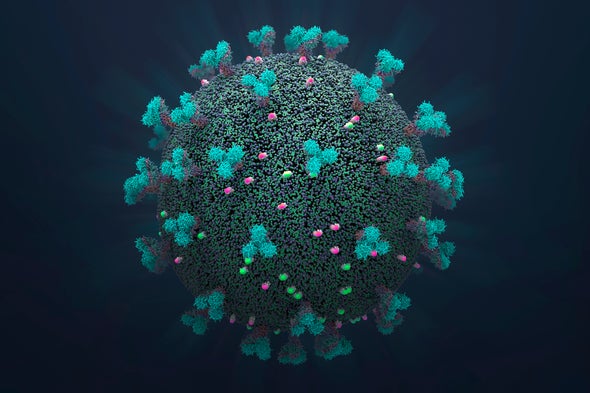
Today we begin a new podcast series: COVID, Quickly. Every two weeks, Scientific American’s senior health editors Tanya Lewis and Josh Fischman catch you up on the essential developments in the pandemic: from vaccines to new variants and everything in between.
Tanya Lewis: Hi, and welcome to COVID, Quickly, a new Scientific American podcast series!
Josh Fischman: This is your fast-track update on the COVID pandemic. We bring you up to speed on the science behind the most urgent questions about the virus and the disease. We demystify the research and help you understand what it really means.
Lewis: I’m Tanya Lewis.
Fischman: I’m Josh Fischman.
Lewis: And we’re Scientific American’s senior health editors. Today we’re going to be talking about the new Johnson & Johnson vaccine, the race between declining cases and the rise of new virus variants, and new ideas about why the virus may trigger diabetes.
Fischman: Tanya, we have a new vaccine, and it seems to work. Who made it, and has the FDA authorized it yet?
Lewis: The shot is made by Johnson & Johnson, and it works. According to data submitted to the FDA, it had 72 percent efficacy in the U.S. clinical trial; 64 percent in South Africa trial, where a worrisome new virus variant has been circulating.
Also, it seems to protect against severe disease, with 86 percent efficacy in U.S. and 82 percent in South Africa.
It may also prevent transmission, although data are not conclusive.
Fischman: Now wait a second. You said shot, not shots?
Lewis: That’s right. Unlike some of the other vaccines out there, Johnson & Johnson’s is a single shot that can be stored at room temperature for up to three months. The biggest hurdle is making enough doses. The FDA advisory committee is meeting now, and the vaccine could be approved very soon.
Lewis: There’s some good news about COVID cases worldwide, Josh, but some other not-so-good news. What’s going on?
Fischman: Since mid-January, case rates have been dropping. Hospitalization rates have dropped, too. For example, in the U.S., cases dropped 30 percent during the past two weeks. The United Kingdom has seen a similar trend.
This is, epidemiologists think, all about us being careful: less group gatherings, activity restrictions local governments put in place after a scary Christmas spike in cases and deaths, and we’re all wearing masks more.
Lewis: So what’s the bad news?
Fischman: Well, the not-so-great news is that several variants are showing up that may be more transmissible and may resist antibodies created by your immune system and even some vaccines. I spoke to Vaughn Cooper, an evolutionary biologist at the University of Pittsburgh, who’s found more variants with mutations at the same spot on the virus. He thinks they appear because they help the virus survive and replicate. We’re okay now, but scientists really want to get more shots in arms to slow the rise of even more variants.
Fischman: Finally, you’ve learned about some new connections between the virus and another disease, right, Tanya?
Lewis: Diabetes is a risk factor for severe COVID. Now many doctors are reporting that COVID may cause new diabetes diagnoses. Some experts think novel coronavirus may infect insulin-producing beta cells in the pancreas, but this idea is somewhat controversial. Another possibility is that the viral infection causes diabetes symptoms or steroids—used to treat severe COVID—are known to raise blood sugar.
Finally, these “new” COVID-related diabetes cases may just be existing disease that doctors hadn’t yet diagnosed. We don’t yet know what’s going on, but scientists are urgently investigating.
Now you’re up to speed. Thanks for joining us.
Fischman: Come back in two weeks for the next episode of COVID, Quickly! And check out SciAm.com for updated and in-depth COVID news.
[The above text is a transcript of this podcast.]
ABOUT THE AUTHOR(S)



No comments:
Post a Comment